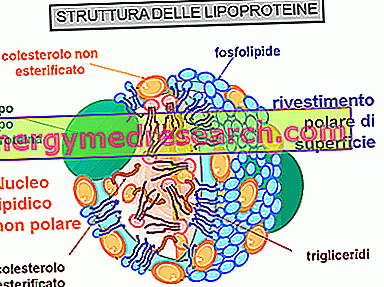Generalities and characteristics of the various fructose syrups
According to the current legislation, " fructose syrup - glucose " is a purified and concentrated aqueous solution of food carbohydrates, obtained from starch, starch and / or inulin, which must have the following characteristics:
a) dry matter not less than 70% by weight
b) dextrose equivalent not less than 20% by weight on the dry substance, expressed in D-glucose
c) sulphated ash not exceeding 1% by weight on the dry substance.
d) fructose content higher than 5% and higher than the glucose content; otherwise, without prejudice to the 5% restriction, we speak of glucose-fructose syrup.
The dextrose equivalent is an estimate of the percentage of reducing sugars present in fructose syrup.

The definition of fructose syrup given by the legislator is quite wide, which is why this name is attributable to products with slightly different characteristics. Highly used, especially in non-alcoholic drinks, are for example fructose-glucose syrups which contain the two sugars in percentages equal to 55 and 45% respectively (HFCS 55); however, other syrup types more or less rich in fructose (HFCS 90, HFCS 42 etc.) are available on the market. The belief that fructose syrup is composed entirely of fructose is therefore erroneous; in reality we are talking about a mix of glucose and fructose in varying proportions. The higher the percentage of fructose, the greater the solubility in water and the sweetening power of the product. Furthermore, fructose develops its maximum sweetener potential in acidity and low temperature conditions; consequently, fructose syrup is widely used in non-alcoholic beverages, the same ones that the British call "soft drinks".
HFCS is the acronym of High-Fructose Corn Syrup, Italianized in high-fructose corn syrup; in fact, this product is obtained mainly from corn starch. Starch, in fact, is a polysaccharide consisting of many glucose units linked together in a linear and branched manner. At the industrial level, enzymes capable of dissolving these bonds are added, giving rise to much shorter glucose chains (maltose, dextrins) and single sugar units. Among these enzymes we remember alpha amylase, which allows to obtain syrups with a content of about 10-20% of free glucose, and gluco-amylase, which increases this percentage over 90%. Alpha-amylase is produced industrially using a bacterial species ( Bacillus sp.), While gluco-amylase uses a fungal species: Aspergillus .
To obtain the product covered by this article, glucose syrup is subjected to the action of the enzyme glucose-isomerase, which allows the commercialization of high fructose corn syrups (HFCS). In fact, since the mid-1970s, this enzyme (more commonly known as xylose isomerase), which transforms glucose into its sweet isomer, fructose, is industrially obtained from the Streptomyces murinus microorganism.
Fructose syrup in food
We find glucose-fructose syrup in many food products (sweets, cereals, biscuits, snacks and yogurt, sports drinks, ketchup etc.); it is also used in ice cream as a controller of the degree of sweetness and to lower the freezing point; thanks to its characteristics it also increases the creaminess and softness of the ice cream.
Fructose syrup, diabetes and body weight
From a metabolic point of view, fructose has some peculiarities that have long made it a valid ally for sportsmen and diabetics. After ingestion, in fact, fructose is absorbed by the digestive tract at a lower speed than glucose and sucrose, hence the low glycemic index. Once absorbed by the small intestine, fructose is conveyed to the liver, where it is used to synthesize hepatic glucose without the need for insulin. Due to this low glycemic and insulin content, fructose has long been considered an ideal substitute for sugar. Today, however, we know that excessive amounts of fructose (> 40-50 g / day) favor the synthesis of fats in the liver and stimulate the secretion of insulin, leading to states of insulin resistance. For this reason, according to several studies, the intensive use of fructose syrup as a sweetener would be somehow involved in the spread of obesity and metabolic disorders such as diabetes.



